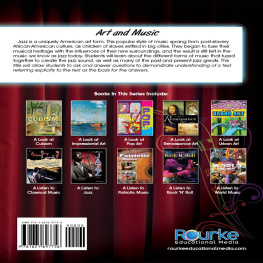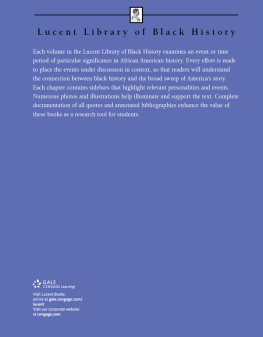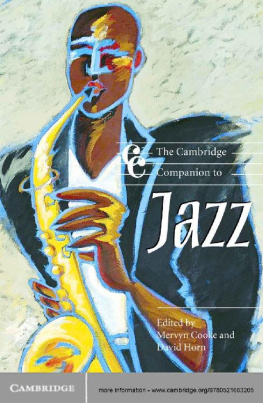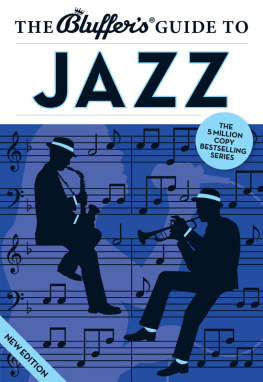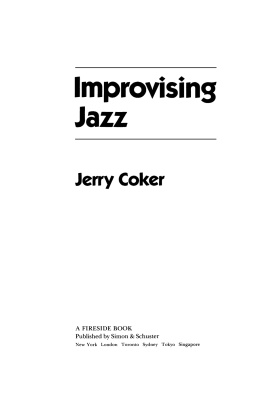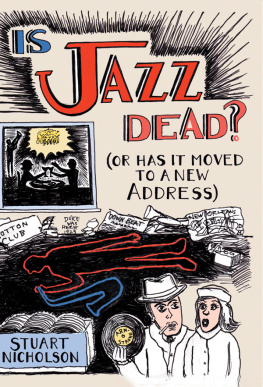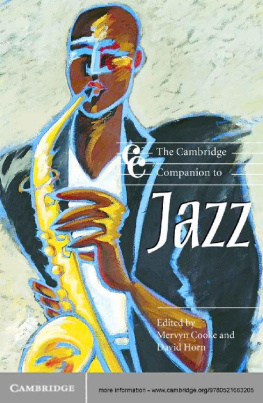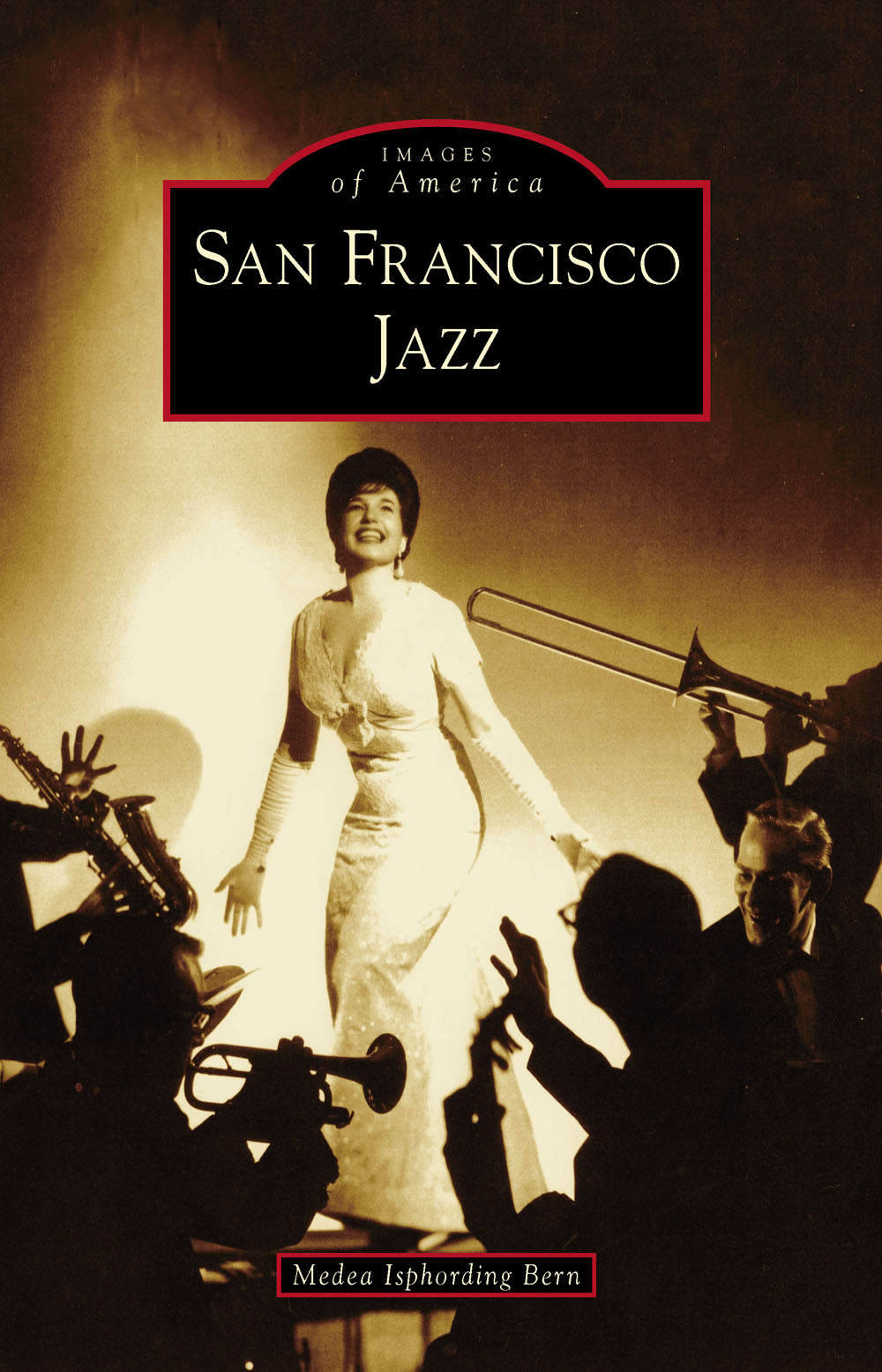
IMAGES
of America
SAN FRANCISCO
JAZZ
ON THE COVER: Pat Yankee and Her Sinners are shown in an award-winning 1962 publicity photograph by Emilie Romaine. Romaine (19081972) and husband Karl worked as vaudeville dancers until the 1929 stock market crash, turning their efforts to photography in the 1930s. Known for their sensitivity to the body in motion, the Romaines photographed dancers and other entertainers for decades, and their studio was in operation until the 1980s. This photograph illustrates Emilies attention to the sensual qualities of the female form, which is reflected in her assertion in an August 1937 issue of Photo-Art Monthly that a woman is warm and soft, not cold; vivacious and alive, not static. (Courtesy of Pat Yankee.)
IMAGES
of America
SAN FRANCISCO
JAZZ
Medea Isphording Bern

Copyright 2014 by Medea Isphording Bern
ISBN 978-1-4671-3287-9
Ebook ISBN 9781439649282
Published by Arcadia Publishing
Charleston, South Carolina
Library of Congress Control Number: 2014954964
For all general information, please contact Arcadia Publishing:
Telephone 843-853-2070
Fax 843-853-0044
E-mail
For customer service and orders:
Toll-Free 1-888-313-2665
Visit us on the Internet at www.arcadiapublishing.com
For my dad, whose record collection started me down this path decades ago. Thank you. In memory of Prentice Pete Douglas, who bestowed an appreciation for small-venue jazz upon my children and countless others during his 50-year career.
CONTENTS
ACKNOWLEDGMENTS
The musicians and fans who populate the San Francisco jazz community have opened their hearts and archives to assist in the creation of this volume.
It is impossible to overstate the generosity of those who contributed their time, stories, and memorabilia: Brian McMillen, a jazz photographer and now friend, opened his glittering archive of emotional and technically astute photographs of Bay Area musicians; William Bill Carter, clarinet player and board member of the San Francisco Traditional Jazz Foundation, provided additional observations about the local jazz ecosystem that allowed this book to be more than a mere recitation of facts; Pat Yankee and Marianne Kent shared tales about their early days on the road, their exploits, their triumphs, and their heartbreaks; Dick Salzman, a local vibraphone player who played in Dave Brubecks band and hung out in Paul Desmonds basement, welcomed me to his hospital room to recount his experiences just two weeks before he passed away; Randall Kline, visionary founder of SFJAZZ, graciously answered my questions about how this nonprofit arts jewel in the citys crown came to be; and Jonathan Manton and Benjamin Bates, archivists of the Stanford Archive of Recorded Sound, were endlessly patient.
Thanks also go to Pete Douglas and Linda Goetz of the Douglas Beach House, Christine Harris of the Jazz Heritage Center, Barrett Shaver and Nora Trice at SFJAZZ, Herb Goodrich, Flicka McGurrin of Pier 23, Allen Houser, Karen Houser, Barbara Dane, Gary Kamiya, Jean Goldberg, Galer Barnes, Casey Stoll, Nelson Stoll, Derrick Bang, Scott Anthony, Jeff Ruetsche, Anne Zimmerman, and many others. Finally, thank you to my family, who supported me during this books gestation.
INTRODUCTION
The first time I remember hearing a trumpet solo that propelled me out of my seat, I was six years old. Al Hirts hirsute cheeks and wide grin called from the baby blue cover of his album Cotton Candy, on which he grips his trumpet as if it were a cone, a pink cloud of confection on top. I propped the album cover up in front of my red-and-white vinyl record player, pretending that Hirt was blowing his horn in appreciation of my sophisticated, interpretive dance steps. As Art Blakey said, You dont have to be a musician to understand jazz. All you have to do is be able to feel.
It was something about a hornthe sensuous licks, the versatility, the way a horn player can deliver multiple octaves of emotion in a single phrasethat drew me in at first. Then, as I listened to other groups, largely traditional jazz standards from my parents collection from their days working in New Orleans, the dialogue between the musicians started to intrigue me: how a saxophone player could play a few bars and the piano player would answer, with the drummer tapping his two cents. Then everyone is talking at once, the whole band shimmering with sound, playing as one. My young mind was just tuning in to the Beatles, on the cusp of total immersion in the Monkees, and shielded from the Rolling Stones by parents who did not quite grasp that the Stones were really Delta bluesmen, and discovering Al Hirt and jazz forever after informed my musical proclivities.
The first use of the term jazz in print occurs in conjunction with a 1913 article about the San Francisco Seals baseball team by Scoop Gleason. It was meant to convey a sense of pep, or spirit, and derives from the Irish word teas, pronounced jass, which means passionate or enthusiastic. In a column featured in the April 5 issue of the San Francisco bulletin that same year, Ernest Hopkins remarks on the onomatopoetic quality of the new word and wrote that jazz is at home in a bar or a ballroom; it is a true American. And yet, the early pioneers of our unique American music, in its many iterationsfrom ragtime to Dixieland to bebop and beyondfelt constrained by the term. They believed that it was a moniker imposed by nonmusicians, mainly white, to identify any kind of nonclassical music. Duke Ellington said calling black music jazz was akin to using a four-letter word: By and large, jazz always has been like the kind of man you wouldnt want your daughter to associate with. The word jazz has been part of the problem.
Like all art forms, music is organic and subject to interpretation by its composers and its performers. The original ragtime blues that forms the foundation of jazz has taken on the patina of legions of musicians who added their own techniques and inspirations to craft a uniquely American sound. In the course of researching this book, I found that the history of the jazz scene in San Francisco is really many histories, overlapped, intertwined, branching out, and circling back. Musicians tour, so naturally, San Franciscos clubs and halls hosted the famous from near, like Dave Brubeck, and far, like Charlie Mingus. And many more musicians who started their careers here or adopted San Francisco as their home earned both fame and adoration, like Turk Murphy and Norma Teagarden.
The deep roots of jazz also spurred countless festivals, including the venerated Monterey Jazz Festival, which Jimmy Lyons founded in 1958 to support and showcase modern jazz music. Jazz festivals still dot the Bay Area cities and towns, ebbing and flowing, traditional jazz or Latin jazz or soul jazz.
The history of San Franciscos jazz music scene continues to be written today. Randall Kline started SFJAZZ in 1982. He produced shows in the city for decades before finally realizing his dream in 2013 and opening a performing arts center dedicated to jazz at the corner of Franklin and Fell Streets in the heart of the Civic Center. The SFJAZZ Center has quickly become the center of both contemporary and experimental jazz, presenting revered greats like saxophonist Wayne Shorter and vibraphonist Bobby Hutcherson as well as the brilliant teenagers who perform with the SFJAZZ High School All-Stars. The stories of these bright young men and women will make up the next chapters in the history of jazz in the Bay Area.
Next page

